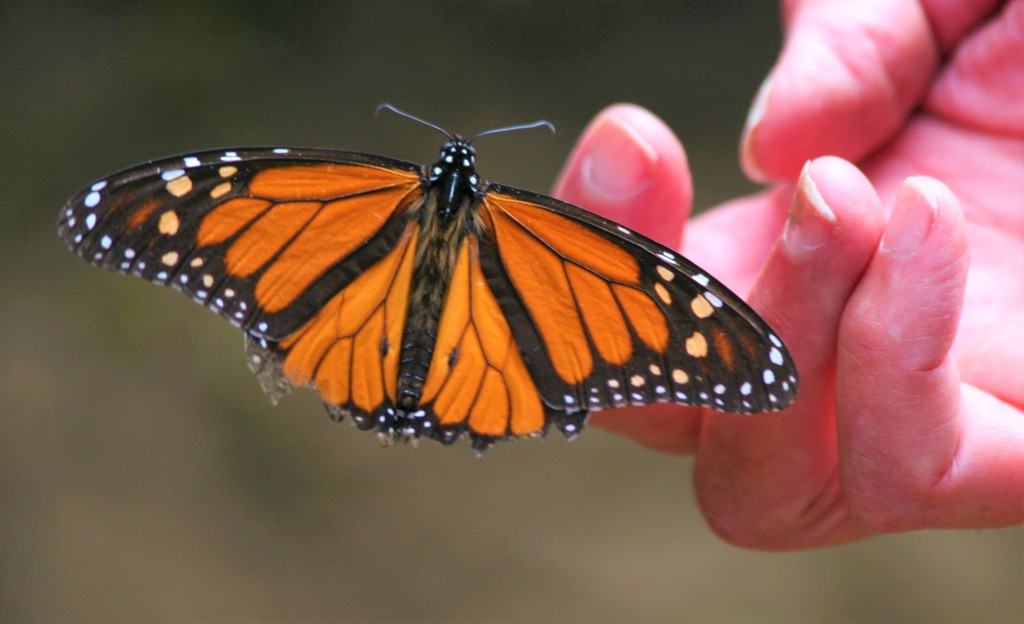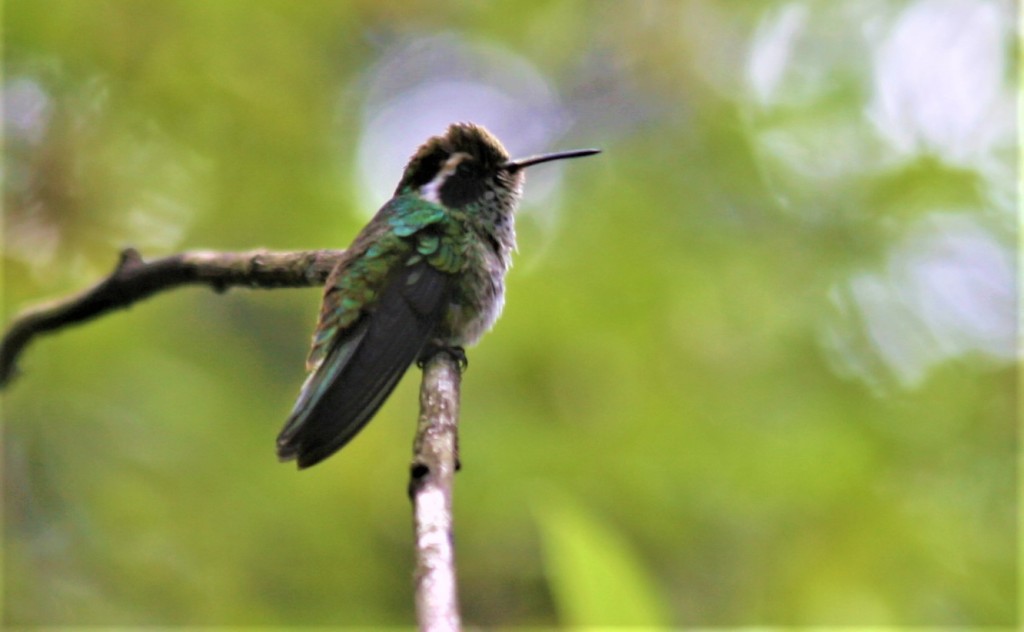
Many birders have a strong secondary interest in butterflies. This is understandable, considering that butterflies are found in the company of birds, are equally colorful and are often mistaken as birds. There are roughly the same number of species of butterflies north of the Mexican border (750) as there are birds (900), although worldwide butterflies outnumber birds about 17,500 to 10,000. Remarkably, only one of these 17,500 species does a roundtrip migration. In comparison, about 5,000 bird species migrate.

That singularly incredible butterfly species is the Monarch, well known to everyone in the U.S. and Canada. Unable to survive the winter weather of Canada and the northern U.S., apart from a relatively small group that winters in Pacific Grove, California, they migrate by the tens of millions to Mexico. In Arizona, most of our tagged Monarchs wind up in Mexico. If you look for Monarchs in Arizona, don’t confuse them with our common Queen Butterflies, which are smaller than Monarchs and lack the bold black wing stripes found on Monarchs.

This is one of the most remarkable animal migrations in the world. Monarch butterflies have a life span of about four weeks, but the generation born at the end of August miraculously survives eight months. This generation of butterflies, known as the Methuselah Generation, lives long enough to fly as far as 3,000 miles south to escape the deadly northern winters. The delicate lightweights fly up to 75 miles each day, typically out of sight at 800-1200 feet and endure wind, storms and predators. Finally, they arrive at the oyamel fir forests at 11,000 feet in the mountains of Mexico’s states of Michoacan and Mexico, the exact spot their great-great-great grandparents migrated 12 months earlier. Here they cluster by the millions to wait out the northern winter. This remarkably extended lifespan ends in March when the returning Monarchs again breed and die off every month or so as they fly back to their point of origin.

The Monarchs, coming from millions of dispersed acres across the United States and Canada, winter together within small colonies that, in aggregate, consist of less than 20 acres. One of the most convenient places to see millions of these beautiful Monarchs is El Rosario Butterfly Sanctuary, a fourteen-mile drive from Angangueo, which is less than a hundred miles from either Morelia or Mexico City. It’s possible to visit the sanctuary as a day trip from Morelia or Mexico City, but when we visited it in 2009, we spent the prior night in Angangueo in order to acclimatize to the high elevation.

Local drivers are available in Angangueo and Ocampo, another small village on the way to the sanctuary, but the short road from Ocampo up the mountain is well-signed, paved with cobblestones and an easy drive in any vehicle. Before you reach the preserve, be prepared to pay a small access fee as you pass through the small ejido of El Rosario, and when you reach the preserve, park in the lot furthest up the road to shorten your hike to the butterflies. From the upper parking lot, you can see the arched entrance to the sanctuary, the Monarch Butterfly Biosphere Reserve. Your modest entry fee includes the services of a guide, a requirement for all visitors. Our guide, Juan, spoke little English but was friendly and in no hurry, and he waited patiently while we stopped to catch our breath or photograph birds along the path, like the platinum-cheeked Red Warbler or the White-eared Hummingbird.

The wide paved trail has many interpretive signs with information about the butterflies and their remarkable migration. Starting at 10,000 feet, the one-mile path climbs through forests of oak, pine and fir, crosses a beautiful meadow and then ends at a viewing area just under 10,800 feet in altitude.

Enormous clusters of butterflies hang darkly from the oyamel fir trees, like giant clusters of leaves. We timed our arrival for early afternoon when we heard that February’s afternoon heat often stirs the Monarchs to leave their roosts. This proved to be one of those lucky days. As the cumulous clouds parted and sunlight lit the forest, butterflies began falling from the trees like a golden snowfall. Waves of orange and black Monarchs cascaded through the air, swirling around and even landing on us. It was truly a moving and magical moment; one you should add to your bucket list.

This article originally appeared in the August 2021 issue of Saddlebag Notes Newspaper, Tucson, Arizona.
